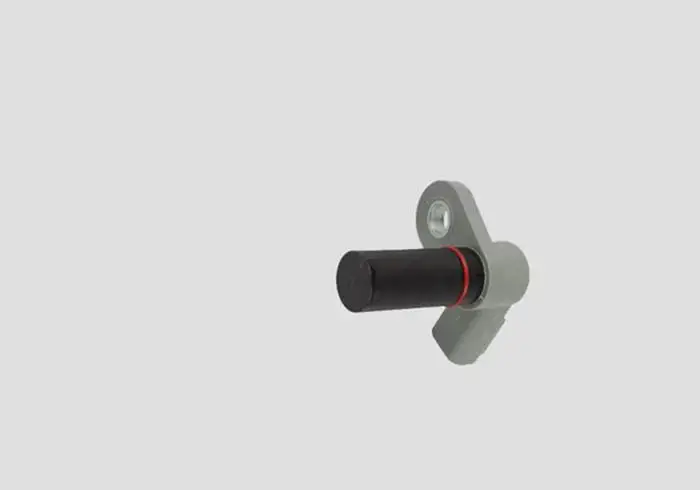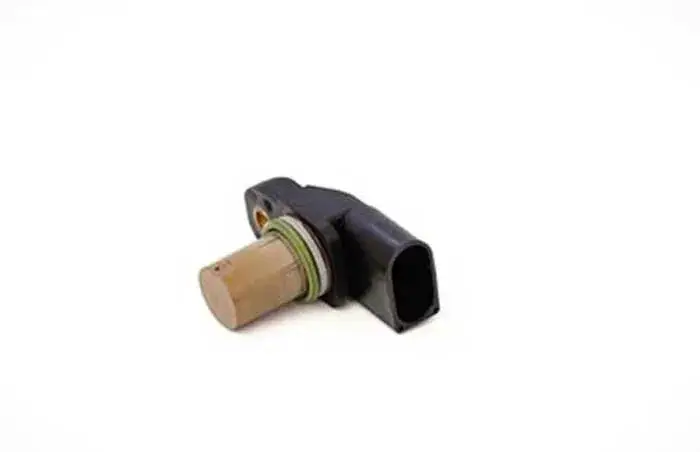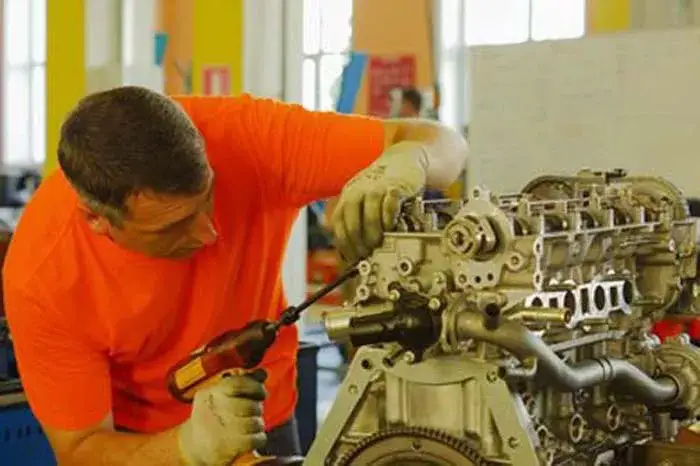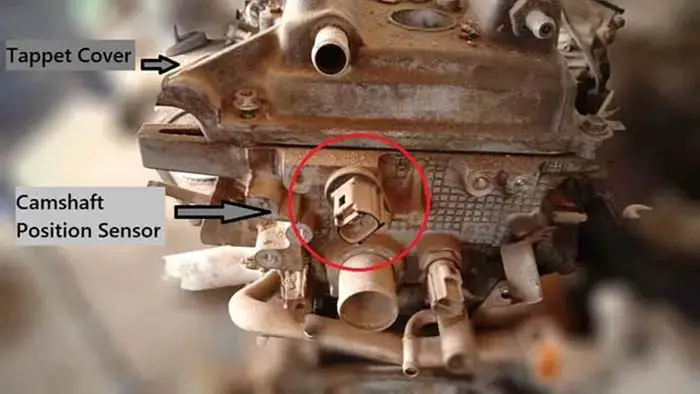
The camshaft position sensor plays an essential role in proper engine function, as it helps monitor and adjust the engine timing. Knowing where the camshaft position sensor is located is key to properly diagnosing any problems with your vehicle’s engine.
If your car is having issues with the engine, it might be a problem with the cam position sensor. This part helps to keep your engine running properly. So, where is this sensor located? In this powerful article, you are going to learn the location of the camshaft position sensor.
What is Camshaft Sensor
A camshaft position sensor is an integral part of any modern vehicle equipped with internal combustion engines. It is responsible for monitoring the position and rotational speed of the camshaft and relaying this information to the engine control unit. This allows the ECU to adjust the timing of the ignition system and air and fuel supply, to improve engine efficiency. It also helps detect the exact timing of when the intake and exhaust valves open and close in order to control the fuel injection and engine timing.
Related Post: Camshaft Position Sensor, How It Works, & Function
Camshaft Position Sensor Location
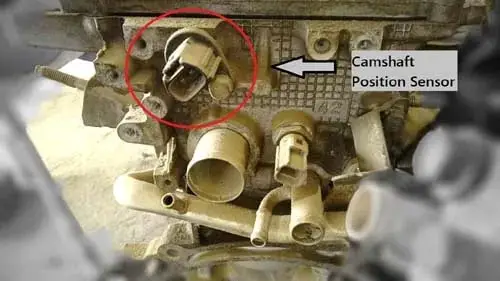
The CMP sensor of the vehicle is one of the most important vehicle sensors. It detects the camshaft rotation and sends the data to the car ECU to analyze the requirements of the intake manifold.
The vehicle could not run properly if this sensor malfunctions, so in this case, it is better to replace the camshaft sensor of the vehicle.
You must know the location of the cam position sensor of the vehicle before going for the replacement of the cam position sensor yourself. It is compulsory for you to locate the camshaft position sensor if you need to replace the faulty camshaft sensor manually.
The location of the car cam position sensor is not fixed and can be found in different places based on the type, make, and model of the vehicle.
The cam position sensor can be found along the axis of the camshaft in the engine compartment. This sensor is located right at the front, back, or (left or right) side of the engine above the camshaft’s notched ring in the valve cover adjacent to the engine block, where the sensor faces the teeth of the camshaft rotor (gear).
It is most likely to be found on top of the engine cylinder head near the timing cover and could be placed on the top of either one or both camshafts (intake and exhaust camshaft).
The cam position sensor could be placed near the tappet cover of the engine. It is located on the exterior side of the engine, and such cam position sensors are easier to replace because of their ease of access.
The sensors may be visible under the hood or could be buried under engine components. A repair manual can help you find the sensors’ location.
Is it Safe Driving With a Bad Cam Sensor
Driving with a faulty camshaft position sensor can be dangerous and lead to significant damage to your vehicle. A camshaft position sensor, also known as a CMP sensor, is an electronic device that is responsible for providing the engine control module (ECM) with information about the position of the camshaft.
If a faulty camshaft sensor is not replaced, it can turn off your engine completely. Additionally, poor engine efficiency, reduced fuel efficiency, and rough idling can also be experienced. Because data from the cam position sensor is responsible for sending fuel into the engine, a faulty sensor can also cause the engine to run poorly or even misfire.
It is important to note that when a cam position sensor goes bad it can cause more than just one issue, this is why in many cases, drivers might not be able to identify the cause of the problem as the cam position sensor, and that’s why it’s very important to get a proper diagnosis from a professional mechanic if you suspect that your sensor is failing.
If the sensor is not working properly, the engine will transmit power poorly or might stall unexpectedly and cause the car to lose power, which could be dangerous in certain driving conditions, especially on the highway or during city traffic.
What Are the Symptoms of a Bad Camshaft Position Sensor
A bad or failing cam position sensor can cause a variety of symptoms that affect the performance of your vehicle. Check engine light, engine stall or not starting, poor engine performance, reduced fuel economy, rough idling, decrease in power, misfires, and malfunctioning fuel injectors are bad sensor symptoms.
The sensor sends a signal to the Engine Control Module (ECM) which uses that signal to manage functions such as fuel delivery, engine timing, and piston compression. If you notice any of these symptoms or suspect that your cam position sensor is bad or failing, it’s important to have it inspected by a professional mechanic as soon as possible to avoid potential engine damage and ensure the safe operation of your vehicle.
Related Post: Top 7 Symptoms Of Bad Camshaft Position Sensor
Camshaft Position Sensor Replacement Cost
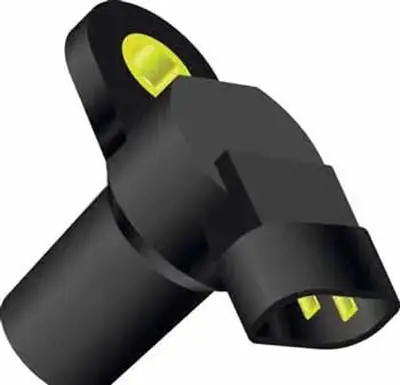
The cost to replace a camshaft position sensor can vary depending on several factors, such as the make and model of your vehicle, the location of the sensor, and the labor costs of the mechanic or dealership. On average, you can expect to pay between $100 and $200 for a cam position sensor replacement, but this cost can be higher or lower depending on the specific vehicle.
In general, the process of replacing a cam position sensor typically involves locating the sensor, which is often mounted near the top of the engine, and then removing the mounting bolt or bolts, as well as the sensor’s electrical connector. It may also require removing the camshaft cover.
Once the sensor is removed, it will need to be replaced with a new sensor. This can be done by bolting or attaching the new sensor to the engine in the same location as the old sensor and then reattaching the wire connector to make sure. it is tight and free from dust and corrosion. The mounting bolt size can vary between vehicles, so you will need an 8mm or 10mm socket or wrench to replace the bolt.
It is important to note that the process of replacing a cam position sensor may vary depending on the vehicle, and in some cases, it may require removing other parts such as a camshaft timing gear or oil pump to access the sensor. This can increase the labor cost and the cost of the replacement part. It is always best to check with a professional mechanic or dealership for an accurate estimate of the cost to replace a cam position sensor on your specific vehicle.
Related Post: What To Do After Replacing Camshaft Sensor: Tips And Tricks
Top FAQs About Camshaft Sensor
A sensor is required to check the proper functioning of the vehicle’s auto parts. For this purpose, crank and cam sensors are used. The crankshaft position sensor provides information about the position and speed of the crankshaft on the engine while the cam position sensor provides the position of the camshaft of the car’s engine. They sent data to the car’s computer which helps in the early diagnosis of automotive repair and saves time.
This sensor work on the principle of the Hall effect. It is placed in front of a ring gear attached to the cam. Gear is to turn with the movement of the cam which induces a voltage signal due to the changing magnetic field. This change sends a signal to the car computer, which uses this information to adjust the fuel injection and ignition timing to ensure optimal engine performance.
Sign Up

